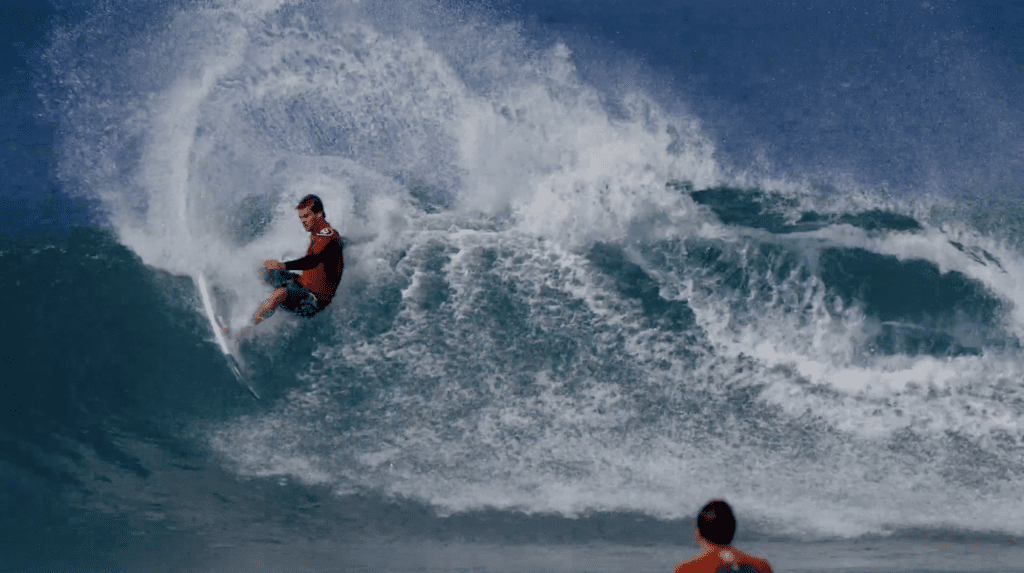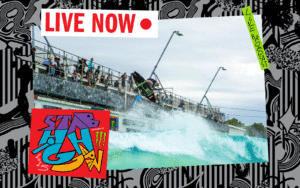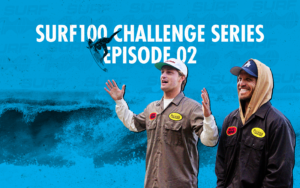Can Brain Stimulation Help You Surf Better?
A doctor explains what TMS therapy is and why CT surfers like Carissa Moore and Jack Robinson are using it.
We’ve over-indexed on TBI articles in the past year. This isn’t another one. Promise. This is a story about a tool elite surfers are leveraging that can work on things that are brain injury related but also performance-enhancement related, and that tool is called Transcranial Magnetic Stimulation or TMS for short.
5x World Champ and Olympic gold medallist, Carissa Moore, Jack Robinson, and North Shore hellmen Mikey Redd and Wyatt McHale are among a handful of surfers getting TMS therapy at the BrainHealth clinic in Honolulu. Stab spoke with BrainHealth’s head Head doctor… if that makes sense, to understand how TMS can be used for rehabilitation and performance enhancement in surfing.
Dr. Jason Keifer completed his medical degree at the University of Nebraska College of Medicine and his psychiatry residency at the University of California San Diego. He continues to collaborate with neurological specialists at UCSD and Stanford as part of his ongoing research. In short, he ain’t no quack and you’d better be swinging some hefty medical clout before you debate him on his twenty plus years of clinical practice.
Jason became interested in TMS as a psychiatric tool that could be applied to a range of neurological conditions after his kid fell out of a parked car and sustained a severe concussion. At the time, his child was three and a half. “He was irritable and he had ticks after. He’d cracked his head so I knew that a large component of it was brain-related. I searched around looking for clinicians pushing the envelope with existing technology safely and landed on TMS.”
TMS involves generating an electrical field through a magnet which can be applied to stimulate parts of the brain that are misfiring. The tech has been around since the mid-80’s but only now is it really gaining traction in psychiatry with advances in brain mapping and technology that have made it safer and more effective.
“I think it’s just a matter of time before it ushers in an entirely new paradigm,” says Jason. “I wouldn’t be doing it if I wasn’t seeing results, and I’m seeing results 9/10 times with our method.” The proof is in the waiting list of patients waiting to see him. It includes a list of high-performing athletes in sports such as golf, tennis, MMA and surfing.
“High-performers don’t do things just to do things. They don’t have time to mess around with things that aren’t working. They’re coming because it’s worked for them or someone they know. Responders experience improved focus, faster neuromuscular reaction time, and better perceived performance. It’s gotten to the point now where quite often they will time their visits ahead of competition.”

TMS has a few upsides compared to traditional chemical ‘enhancements,’ namely that there are minimal side effects, no risks of dependency and it all occurs within the context of medical supervision. Surfing has had a tumultuous relationship with prescription drugs and there is no shortage of surfers who have had to walk the dark path back from the brink of self-destructive substance abuse disorders if they haven’t fallen off. “TMS works by imitating the activity of drugs but within certain parameters that make it safer and more controlled.”
“When golf, tennis, football or MMA guys coming in,” says Jason. “Whether they realize it or not, a lot of their performance outcomes are concussion related. So if they say they’re coming in for strictly performance purposes or medical purposes it’s almost irrelevant because the targets will likely be the same. There is something not working optimally that we can identify using brain mapping and then target with a TMS coil.”
He continues, “Your brain is a cluster of 100 billion neurons with this very sophisticated interconnected architecture that processes and relays all the information you take in. And its consistency is like tofu inside of a bowl, it’s gelatinous, and if you’re travelling at speed and then suddenly stop, that inertial force of it hitting the bowl wall won’t cause it to rip apart but it will easily cause shearing. The common misconception within surfing is that because water is soft it’s not possible. The truth is, it doesn’t matter if you’re on the water, timber or concrete, if you hit it with force it you can have a concussion,” he explains.
Jason’s conservative estimate of the prevalence of concussion symptoms in surfers is about 30%. “The real figure (owing to stigma and poor understanding of symptoms) is probably higher though.”
Jason is not promising anything that will make you bilingual, bring up your IQ 10 points, or allow you to sink a rail like Robbo. “Nor is it about putting people in a bubble and discouraging them from activity, it’s just allowing people to be educated so that they can prevent further harm and, if they want it, potentially giving them that extra 1% to perform at their best.”
The one thing clear from all of our TBI articles and conversations with surfers who have experienced them is that they are incredibly common and often require personalised and multi-disciplinary interventions. Koa Smith‘s breakthrough came by self-medicating with mushrooms, Nathan Fletcher found yoga and breathwork to be massively beneficial, Owen Wright found neuromuscular stabilization therapy and hyperbaric oxygen tanks to be of service.
TMS is no panacea it’s just something new in the clinical quiver.













Comments
Comments are a Stab Premium feature. Gotta join to talk shop.
Already a member? Sign In
Want to join? Sign Up